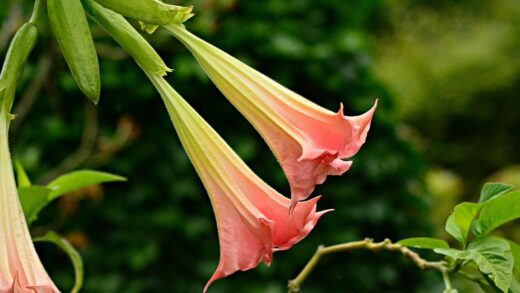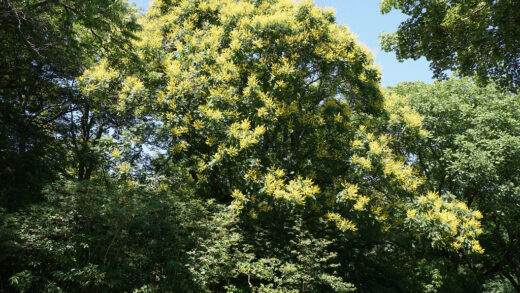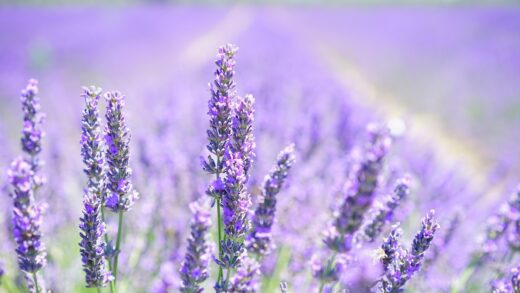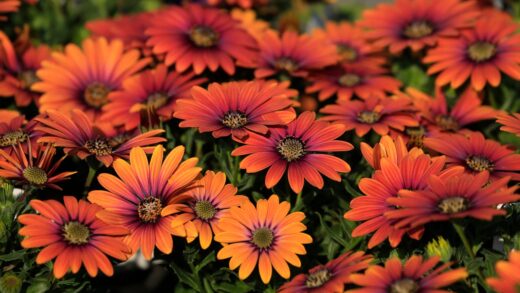The approach to pruning and cutting back purpletop vervain is relatively simple and is guided by the plant’s natural life cycle and growth habit. Unlike many shrubs or perennials that require complex pruning regimes to maintain their shape and productivity, the interventions needed for this plant are few but timed for specific purposes. The primary goals of any cutting are to encourage a bushier structure, prolong the flowering season, and maintain garden hygiene. Understanding when and why to make these cuts is essential for getting the most out of this elegant and long-blooming plant, ensuring it remains a healthy and structurally sound feature in the garden.
Pruning for purpletop vervain can be broken down into three main activities, each occurring at a different stage of the growing season. The first is an optional ‘pinch’ or light trim in late spring, designed to promote a denser, more branched plant. The second is the ongoing practice of deadheading throughout the summer, which serves to extend the blooming period. The final and most critical cut is the annual hard pruning of the old stems, which should only be done in early spring as new growth emerges. Each of these actions has a distinct purpose and contributes to the overall health and performance of the plant.
It is equally important to understand what not to do. The most common pruning error with this species is cutting the entire plant back to the ground in the autumn. While this is a standard practice for many other perennials, it is detrimental to purpletop vervain. The tall, hollow stems provide crucial winter protection for the plant’s crown. Removing them in the autumn leaves the most vulnerable part of the plant exposed to the harsh conditions of winter, significantly reducing its chances of survival in colder climates. Patience is key; the main cleanup must wait until spring.
The tools used for pruning should also be appropriate for the task. For pinching back young growth or deadheading individual flower stems, a pair of sharp secateurs or even your fingertips will suffice. For the main cut-back of the tough, woody stems in the spring, a sturdy pair of secateurs or long-handled loppers may be necessary. Ensuring your tools are clean and sharp will make the job easier and result in clean cuts that heal quickly, reducing the risk of disease entering the plant through jagged wounds.
The principles behind pruning verbena
The fundamental principle guiding the pruning of purpletop vervain is to work with the plant’s natural tendencies rather than against them. This plant has a strong basal growth habit, meaning that new shoots for the following season emerge from the crown at the base of the plant, not from the old woody stems. Therefore, the primary pruning act is one of renewal, removing the old, dead material from the previous year to make way for the new growth. This is a crucial distinction from plants that flower on old wood and require a more selective pruning approach.
More articles on this topic
Another key principle is that pruning can be used to manipulate the plant’s shape and size. The practice of ‘pinching back’ early in the season is a direct application of this principle. By removing the apical meristem—the primary growing point at the tip of the stem—you break its hormonal dominance. This signals the dormant buds lower down on the stem to begin growing, resulting in a plant that is more branched, more compact, and produces a greater number of flowering stems. This is a way of controlling the plant’s height and creating a fuller appearance.
The principle of energy redirection is central to the practice of deadheading. A plant’s ultimate biological purpose is to reproduce, which for purpletop vervain means producing seeds. Once a flower is pollinated and begins to fade, the plant diverts a significant amount of its energy into developing those seeds. By removing the spent flower heads before they can set seed, you interrupt this process. The plant, still driven to reproduce, will then redirect that energy back into producing more flowers, effectively extending the blooming season and maximizing the ornamental display.
Finally, the principle of protection governs the timing of the main cut-back. Leaving the old stems in place over winter is a form of natural insulation. The stems create a physical barrier against wind and cold, and their hollow structure traps air, providing a slight insulating effect. They also help to catch falling leaves and snow, which further blankets and protects the crown. Pruning in harmony with these principles ensures that your actions are beneficial, promoting the plant’s health, appearance, and longevity.
Early season pinching for bushier growth
‘Pinching’, or ‘pinching back’, is a simple pruning technique performed in late spring or early summer to encourage a more compact and densely branched purpletop vervain. This practice is entirely optional, as the plant will grow and flower perfectly well without it, but it can be very effective for achieving a particular aesthetic. It is especially useful for plants grown in slightly richer soil or in locations where they might grow exceptionally tall and could benefit from a sturdier, less towering stature. The result is a shorter, fuller plant with a greater number of individual flower heads.
More articles on this topic
The ideal time to pinch back your verbena is when the young, new growth has reached a height of about 20 to 30 centimetres. At this stage, the stems are still soft and herbaceous, making them easy to cut. The process itself is very straightforward. Using your thumb and forefinger or a pair of clean, sharp secateurs, simply remove the top 5 to 10 centimetres of the main growing stem. Make your cut just above a set of leaves. From the leaf axils just below your cut, the plant will send out two or more new side shoots.
This single act of removing the main growing tip has a significant impact on the plant’s structure. Each new side shoot that develops will eventually terminate in its own flower cluster. Therefore, a single stem that would have produced one flower head can be encouraged to produce two, three, or even more. By pinching back several of the main stems on a young plant, you can dramatically increase the total number of blooms it will carry, creating a much denser and more impactful floral display.
It is important to note that pinching will slightly delay the onset of the first flowers. Because the plant has to redirect its energy into producing new side shoots, the first blooms may appear a week or two later than on an un-pinched plant. However, for many gardeners, this slight delay is a worthwhile trade-off for the resulting bushier habit and the increased volume of flowers throughout the peak of the season. Do not pinch the plant back too late in the season, as this can delay flowering significantly.
Deadheading to prolong the flowering season
Deadheading is the horticultural practice of removing spent flowers from a plant, and it is one of the most effective ways to keep purpletop vervain blooming profusely from summer right through to the first frosts. The primary purpose of deadheading is to prevent the plant from setting seed. Once a plant begins to produce seeds, its hormonal signals change, and its focus shifts from flower production to seed maturation. By consistently removing the fading flower heads, you trick the plant into remaining in a flowering state for a much longer period.
The process of deadheading purpletop vervain is simple. As a flower cluster starts to fade—the individual florets will close up and the colour will dull and turn brown—it is time to remove it. Follow the stem down from the spent flower head to the first set of leaves or to a point where a new side shoot is emerging. Make a clean cut at this point using a pair of secateurs. This not only removes the unattractive spent bloom but also encourages the new side shoots to develop and produce their own flowers more quickly.
Regularly deadheading throughout the summer months will result in a continuous and prolonged display of fresh, vibrant purple flowers. It is a task that can be incorporated into your routine garden walks, taking just a few minutes each week to snip off any fading blooms. This small investment of time pays huge dividends in the length and quality of the floral show. It also helps to keep the plant looking neat and tidy, enhancing its overall ornamental value in the garden.
While deadheading is highly recommended for maximizing flowers, you may wish to stop this practice towards the end of the season. Allowing some of the later flower heads to mature and set seed can be beneficial for two reasons. Firstly, the dark, structural seed heads can provide valuable visual interest in the late autumn and winter garden. Secondly, and more importantly, if you want your purpletop vervain to self-sow and produce new seedlings for the following year, you must allow some of the flowers to complete their life cycle and disperse their seeds.
The end-of-season cutback
The most significant pruning task for purpletop vervain is the annual hard cutback, but its timing is absolutely critical for the health and survival of the plant. This major prune should not be done in the autumn. The correct time to cut the plant back is in late winter or early spring, just as new growth is beginning to emerge at the base. Waiting until this point ensures that the old stems have fulfilled their role of protecting the crown throughout the coldest part of the year. Cutting back too early in winter can expose the crown to late-season frosts.
When you begin to see the small, green rosettes of new leaves appearing at the soil level around the base of the old stems, you know it is safe to proceed. Using a sturdy pair of secateurs or loppers, cut all of the old, woody stems from the previous year down to a height of about 10 to 15 centimetres. This removes the dead material, tidies up the plant’s appearance, and, most importantly, allows sunlight and air to reach the new shoots, encouraging them to grow vigorously.
Be careful when cutting back the old stems to avoid damaging the tender new growth at the base. Work methodically around the clump, identifying the old stems and making clean cuts. Leaving a short stub of the old stems can help to mark the plant’s location and can offer a small amount of protection for the new shoots as they first emerge. The woody stems can be quite tough, so ensure your tools are sharp to make the job easier and safer.
This annual spring cutback is an act of renewal that invigorates the plant for the new growing season. It clears the way for a fresh flush of growth that will form the structure of the plant for the coming year. This single, well-timed task, combined with the optional pinching and deadheading during the growing season, constitutes the entire pruning regimen needed to keep your purpletop vervain healthy, attractive, and floriferous for many years.
Tools and techniques for effective pruning
For all pruning tasks, using the right tool is essential for both the health of the plant and the ease of the gardener. For the delicate work of pinching back young shoots, your own fingertips are often the best tool, as you can accurately pinch out the soft growing tip without damaging the rest of the stem. For more precision or for deadheading, a pair of bypass secateurs is ideal. Bypass secateurs have two curved blades that pass by each other like scissors, making a clean, sharp cut that minimizes damage to the plant’s tissues.
When it comes to the main spring cutback, the old stems of purpletop vervain can be surprisingly tough and woody. A standard pair of secateurs will work for thinner stems, but for a mature, dense clump, you may find a pair of long-handled loppers to be more effective. Loppers provide greater leverage, allowing you to cut through the thickest stems with much less effort. Again, a bypass-style lopper is preferable to an anvil-style one, which can crush the stem tissue.
Before you begin any pruning, it is crucial to ensure your tools are both clean and sharp. Sharp tools make clean cuts that heal more quickly, reducing the risk of disease entering the plant. Dull blades can crush and tear the plant’s stems, creating ragged wounds that are slow to heal and are more susceptible to infection. You can sharpen your tools with a file or a specialized sharpener. Cleaning your tools, especially between different plants, with a disinfectant like rubbing alcohol or a dilute bleach solution helps to prevent the spread of any potential plant diseases.
The technique for making a cut is also important. Whenever possible, make your cuts at a slight angle, which allows water to run off the cut surface rather than pooling on it. When pruning back to a leaf node or a side shoot, make the cut about half a centimetre above the node. This avoids leaving a dead stub, which can die back and become a potential entry point for disease, while also ensuring you do not damage the new growing point. These simple techniques will ensure your pruning is effective and beneficial to the plant.


















